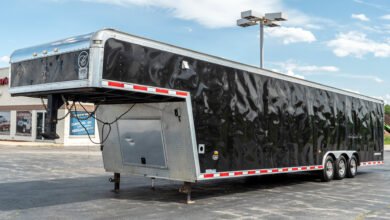The 300 Watt Inverter: Your Undeniable Power Solution

In today’s world, where electricity is crucial for nearly every aspect of our lives, having a reliable power source is essential. One popular solution that has gained popularity in recent years is the inverter. This blog post will delve into the undeniable necessity of a 300 watt inverter as a power solution for various applications.
Understanding the Basics of Inverters
At their core, inverters are devices engineered to convert direct current (DC) into alternating current (AC), electricity typically used in homes and by most consumer electronics. This conversion process is crucial for utilizing battery-stored energy or solar power in various applications, from residential to recreational activities. Inverters come in an extensive range of sizes and power capacities, each designed to meet specific energy needs.
The basic functioning of an inverter involves taking the DC power from a source, such as a battery or solar panel, and transforming it through an electronic circuit to produce AC power. This power is compatible with the electrical requirements of standard appliances and devices, making inverters an indispensable tool for off-grid living, emergency power backup, or simply providing electricity in areas where conventional power sources are not readily available.
When selecting an inverter, understanding its wattage rating is crucial as it determines the number of devices you can power simultaneously. The 300-watt inverter, for example, caters to those needing a moderate electricity supply for smaller appliances or charging various devices, bridging the gap between minimal power needs and the necessity for mobility and ease of use.
Inverters also vary in the waveform of the AC power they produce, with pure sine wave and modified sine wave being the most common. The type of waveform affects the compatibility and efficiency of powering certain devices, emphasizing the importance of matching the inverter to the specific requirements of your electronics for optimal performance. This understanding lays the foundation for making informed choices about the type and capacity of inverter that best suits your needs, ensuring a reliable power source where and when you need it.
Why 300 Watts?
The choice of a 300-watt inverter is guided by the sweet spot it hits in balancing power capability with ease of mobility. For many, the allure of such an inverter lies in its ability to efficiently power essential devices without the bulk and weight associated with higher-capacity models. It caters precisely to those whose electrical needs are moderate but vital—such as powering communication devices, small tools, and personal appliances during travel, fieldwork, or power outages. This wattage is sufficient for a broad range of electronics, making it a versatile option for users across different contexts.
Its appeal extends beyond mere power output; the 300-watt inverter’s design considers the practical aspects of daily use. Its compact form factor can be easily integrated into various settings, from a vehicle’s storage compartment to a small corner in a home emergency kit. This portability is crucial for outdoor enthusiasts and professionals working in remote areas, allowing them to carry and set up a reliable power source with minimal effort.
Furthermore, the efficiency of a 300-watt inverter cannot be overstated. It is engineered to minimize energy loss in the conversion process, ensuring that users get the most out of their power sources, whether batteries or solar panels. This efficiency translates to longer usage before recharging, an essential feature for activities away from conventional power grids.
In selecting a 300-watt inverter, users find a balance that larger or smaller units may not provide—enough power for critical and convenience appliances while remaining light and compact enough for easy transportation. This balance makes it a preferred choice for a wide demographic, highlighting its role as a practical and necessary tool in modern power solutions.
Key Features of a Quality 300w Inverter
Sine Wave Output
A hallmark of a quality 300w inverter is its ability to produce pure sine wave output. This feature ensures that it can power sensitive electronic devices without causing damage or interference, mirroring the smooth, consistent flow of electricity one would expect from a traditional power outlet. This is particularly important for medical equipment, high-precision tools, and audio/visual devices, which require stable and clean power to function correctly.
Multiple Connectivity Options
Top-notch 300-watt inverters offer connectivity options, including standard AC outlets, USB ports, and sometimes even 12V DC outputs. This array of ports allows users to charge and power multiple devices simultaneously, catering to the modern need for versatility and convenience. Having multiple connection points adds to the inverter’s utility, whether for smartphones, laptops, or small appliances.
High-Efficiency Conversion
Efficiency is critical in quality inverters, ensuring that power is converted from DC to AC with minimal loss. A 300-watt inverter that boasts high conversion efficiency will use the stored power from batteries or solar panels more effectively, allowing for extended use and reducing the need for frequent power source recharging. This efficiency is vital for maximizing the utility of the power stored in batteries, especially in off-grid situations.
Robust Safety Features
Safety cannot be overstated when dealing with electrical devices. A premium 300-watt inverter incorporates several safety features, such as overvoltage, overload, short-circuit, and overheating protection. These mechanisms safeguard the inverter, devices, and users against common electrical hazards. Additionally, quality inverters might include an automatic shutdown feature to prevent damage to the unit and connected devices during irregular power situations.
Versatility and Applications of 300 Watt Power Inverter
The adaptability of 300 watt power inverter makes it ideal for a myriad of scenarios beyond just emergency preparedness or outdoor adventures. They seamlessly integrate into the lifestyle of modern nomads living in RVs or those who prefer the minimalist existence of tiny homes, offering enough juice to keep essential gadgets and small appliances running without hitching onto the grid. Campers and outdoor enthusiasts find these inverters particularly useful for powering lighting, charging devices, and even running small cooking appliances to elevate their wilderness experiences.
In professional use, these inverters are silent heroes for field researchers, freelance photographers, and anyone needing to keep their equipment charged without conventional power sources. The portability and efficiency of a 300-watt inverter mean that it can be easily incorporated into a mobile workstation, allowing for productivity in the most remote locations.
Moreover, these inverters have found their place in emergency kits for home and auto use, proving invaluable during power outages by keeping communication lines open and essential devices operational. The practical applications extend to powering tools in workshops where conventional power may not be readily accessible, highlighting their utility in personal and professional environments.
Comparison with Other Power Solutions
Versus Traditional Generators
Traditional generators, while powerful, are often bulky and run on fuel, making them less environmentally friendly and more cumbersome to use and transport. In contrast, a 300-watt inverter is lightweight, operates silently, and can be powered by eco-friendly solar panels, making it a more convenient and sustainable option for light power needs.
Against Higher Capacity Inverters
While inverters are available in various capacities, models exceeding 300 watts cater to more intensive power requirements. However, these larger inverters can be overkill for users needing to power only small appliances or charge multiple devices, where a 300-watt inverter’s portability and efficiency shine.
Compared to Solar Chargers
Solar chargers are compact and perfect for charging small devices directly from the sun. However, they lack the versatility and broader application range of a 300-watt inverter, which can convert stored power into AC electricity for various electronics, not just those that can be charged via USB.
With Portable Power Stations
Portable power stations integrate battery storage and an inverter in one unit, offering a convenient package. While they provide similar portability and ease of use, they can be significantly more expensive and less flexible than combining a 300-watt inverter with separate high-capacity batteries, especially for users who already own or require a customizable power solution.
Against Direct Power from Batteries
Utilizing power directly from batteries limits usage to devices that can accept DC power, significantly narrowing the range of usable appliances and gadgets. A 300-watt inverter expands this capability by converting DC to AC power, accommodating a wide array of household devices and charging needs, making it an indispensable tool for diverse power requirements.
Installation and Maintenance Tips for Power Inverter 300w
Proper Installation Site
Choosing the right location for your power inverter 300w is crucial. It should be installed in a dry, cool place with plenty of ventilation to prevent overheating. Avoid direct sunlight and ensure it’s away from any moisture or water source.
Secure Mounting
Ensure your inverter is securely mounted on a stable, flat surface to minimize vibration, which can loosen connections over time. Use the mounting brackets provided and follow the manufacturer’s instructions for installation to prevent damage to the inverter or its surroundings.
Battery Connection Safety
Always connect your inverter to the battery with the correct polarity and use appropriate gauge cables to handle the power output. Installing a fuse or circuit breaker between the inverter and the battery is advisable to protect against electrical surges.
Regular Cleaning
Dust and debris can accumulate in your inverter, impeding airflow and leading to overheating. Gently clean the exterior and vents with a soft brush or cloth regularly. Ensure the inverter is turned off and disconnected from any power source before cleaning.
Routine Checks
Periodically inspect your inverter for any signs of wear and tear, such as loose connections or damaged cables. Checking the inverter and battery terminals for corrosion and ensuring all connections are tight can prevent power loss and extend the life of your inverter.
By adhering to these installation and maintenance tips, you can ensure your 300-watt inverter operates safely and efficiently, providing reliable power for your needs.
Conclusion
The significance of the 300-watt inverter modern power solutions cannot be overstated. It strikes a perfect balance between portability and power, making it an essential tool for anyone from outdoor enthusiasts to professionals working remotely. Its ability to convert DC to AC power efficiently ensures that essential devices and small appliances can remain operational in various situations, from unexpected power outages to adventures in the great outdoors.
This power solution’s adaptability is one of its most compelling attributes. It offers the flexibility needed to meet the demands of modern, mobile lifestyles without the bulk or complexity of larger units. Its design, emphasising efficiency and user-friendliness, incorporates features such as multiple connectivity options and built-in safety protections, underscoring its value in everyday and critical use scenarios.
FAQ’S
Q: What devices can provide 300-watt inverter power?
A: A 300-watt inverter is ideal for powering small to medium devices such as laptops, smartphones, small fans, lights, and charging batteries. It is unsuitable for high-power appliances like refrigerators, microwaves, or electric heaters.
Q: Is it possible to use a 300-watt inverter for outdoor activities?
A: Absolutely; its compact size and efficiency make it perfect for camping, RV trips, and other outdoor activities where a moderate power supply is necessary for charging devices and running small appliances.
Q: Can I use solar panels to power a 300-watt inverter?
A: Yes, a 300-watt inverter can be powered by solar panels. This setup requires solar panels that generate enough DC voltage to meet the inverter’s input requirements and a battery system to store the solar power.
| Related Business Listings |
| Contact Directory |
| Local Business Profiles |



